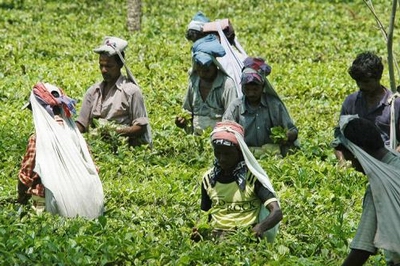
India exports 12 million kg of tea to Iran each year. The Golakpur Tea Estate in Tripura has signed an agreement to export 10 tonnes of tea in the current financial year to an Iranian importer.
The Indian company had already exported 30,000 kg of processed tea leaves to Tehran this year, according to the Deputy Director of the Tea Development Corporation of Tripura, S. Das. The consignment would be transported through Kolkata and Mumbai ports.
Tripura hosts 58 tea gardens where 7.75 million kg of tea is grown every year on 13,372 hectares. Last year, the Manu Valley Tea estate of North Tripura sold a bulk consignment of green tea to the UK, Afghanistan and Pakistan.
Data from the Tea Board of India showed that last year, tea production in the country was pegged at 1,126 million kg. During January to August, tea production has risen by 6.2 per cent to 705 million kg as compared to 664 million kg during the corresponding period of last year.
Despite the rise in production, India continues to import tea. The total supply of tea, including imports, is likely to be around 1,200 million kg this year. It has grown by a compounded annual growth rate (CAGR) of 4.5 per cent in the last three years till 2012. Total demand, on the other hand, including exports, has grown by a CAGR of around 1.5 per cent.
In 2012, the total supply of tea, including imports, was 1,147 million kg, while total demand, including exports, was 1,096 million kg, according to data from the Tea Board of India.
Paras Desai, Executive Director, Wagh Bakri Tea Group noted, “Till August, the growth in tea production has been above the CAGR of the last three years. With growth of around 5 per cent for the full year, this will translate into production of around 1,180 million kg. Together with imports of about 20 million kg, the total tea supply would be about 1,200 million kg this year.”
He further added that the Assam Valley, Dooars and Terai regions, which together contribute to 60 per cent of total production, have shown good growth. “Production in these regions will be higher in September and October also, and we expect overall growth of 5 per cent. Though production in South India has gone down during this period, we expect production figures to improve in the next two months due to good rains,” he added.
For the first quarter of January to March 2013, exports rose by about 34 per cent to 59.8 million kg. “Even if exports were to rise by 15 per cent as compared to last year, we would have more than 900 million kg of tea left for domestic consumption,” said Desai.
Data from the board suggests that over the last two years, Indian tea production has exceeded total demand. However, despite excess production, the price of quality teas has moved up over the last year.





